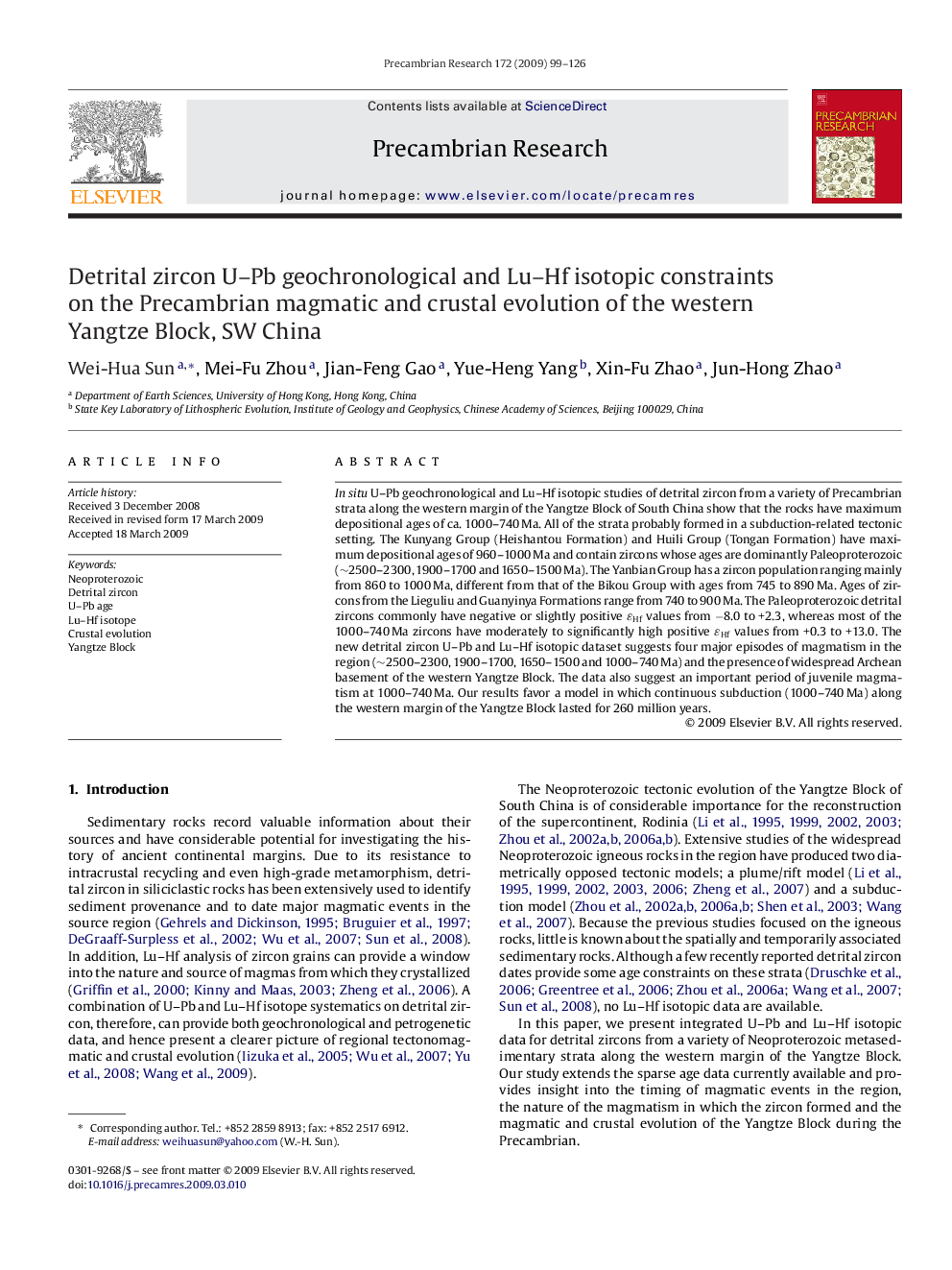| Article ID | Journal | Published Year | Pages | File Type |
|---|---|---|---|---|
| 4724223 | Precambrian Research | 2009 | 28 Pages |
In situ U–Pb geochronological and Lu–Hf isotopic studies of detrital zircon from a variety of Precambrian strata along the western margin of the Yangtze Block of South China show that the rocks have maximum depositional ages of ca. 1000–740 Ma. All of the strata probably formed in a subduction-related tectonic setting. The Kunyang Group (Heishantou Formation) and Huili Group (Tongan Formation) have maximum depositional ages of 960–1000 Ma and contain zircons whose ages are dominantly Paleoproterozoic (∼2500–2300, 1900–1700 and 1650–1500 Ma). The Yanbian Group has a zircon population ranging mainly from 860 to 1000 Ma, different from that of the Bikou Group with ages from 745 to 890 Ma. Ages of zircons from the Lieguliu and Guanyinya Formations range from 740 to 900 Ma. The Paleoproterozoic detrital zircons commonly have negative or slightly positive ɛHf values from −8.0 to +2.3, whereas most of the 1000–740 Ma zircons have moderately to significantly high positive ɛHf values from +0.3 to +13.0. The new detrital zircon U–Pb and Lu–Hf isotopic dataset suggests four major episodes of magmatism in the region (∼2500–2300, 1900–1700, 1650–1500 and 1000–740 Ma) and the presence of widespread Archean basement of the western Yangtze Block. The data also suggest an important period of juvenile magmatism at 1000–740 Ma. Our results favor a model in which continuous subduction (1000–740 Ma) along the western margin of the Yangtze Block lasted for 260 million years.
